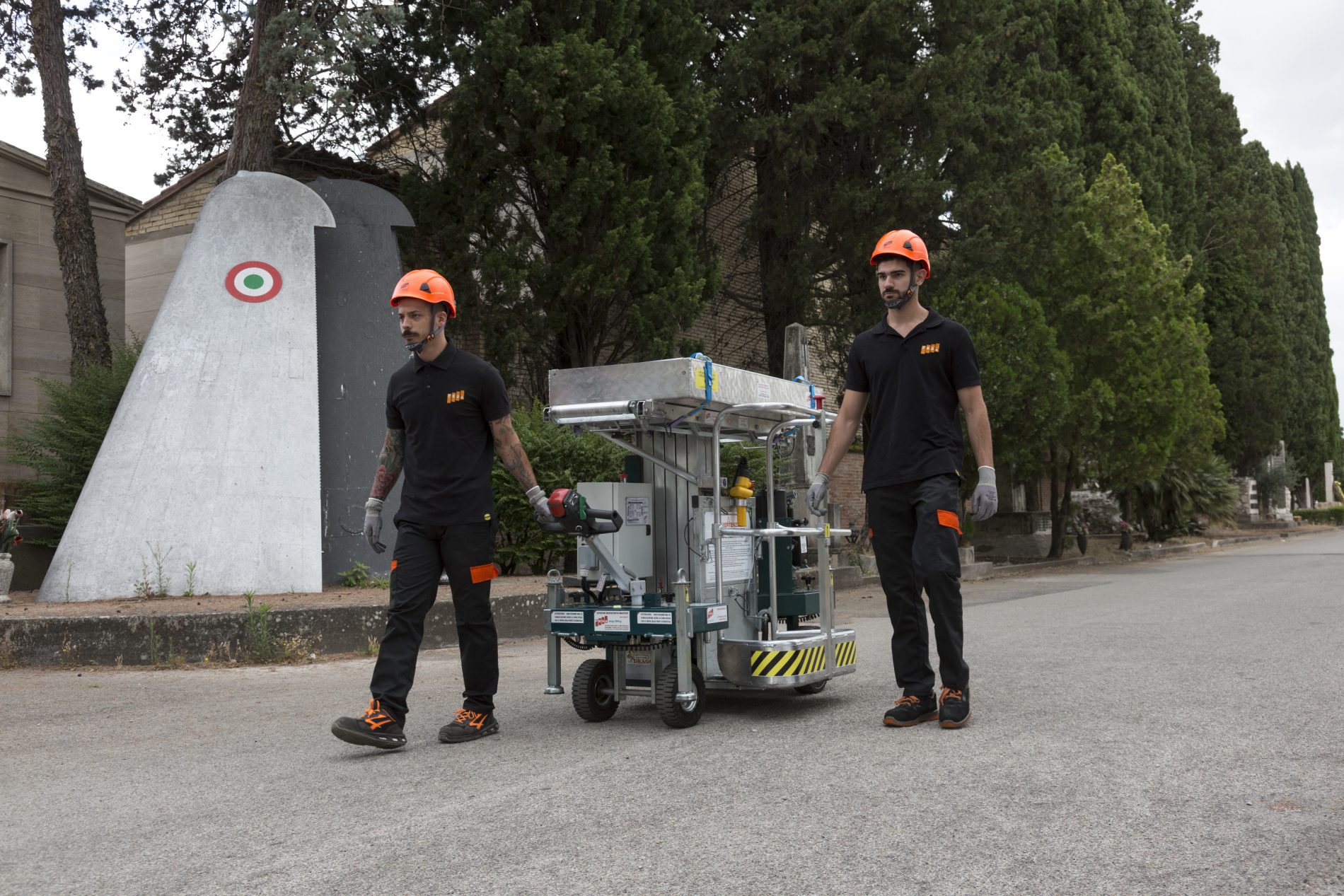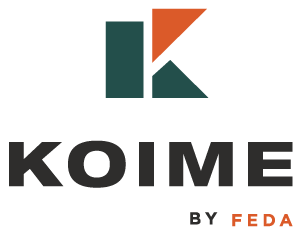Blog
Guide on how to choose cemetery equipment

The cemetery is also a place of work, where the same regulatory requirements and therefore assessments apply as in other workplaces.
To this end, in this article we will discuss how to make an informed choice of cemetery equipment.
What types of cemetery operations are carried out?
Wanting to imagine a cemetery within which there are burial niches placed on columbaria or within family chapels, common fields and underground graves, the operations will be as follows:
- High burial
- Deep burial
- Inhumation
Given the exhaustible number of burial places and the expiry of concessions (if not renewed), we will also have operations of:
- Extumulation
- Exhumation
What are the risks of cemetery operations?
A proper risk assessment in cemeteries should include the estimation of the following risks:
- Risk of falling for work at height
- Risk of manual handling of loads
- Risk in excavation activities
- Chemical risk
- Risk of working in confined spaces
The legislation on health and safety at work, Legislative Decree 81/08, lists all the above-mentioned risks and how the employer must act to reduce or eliminate them. In this regard, Article 71 of the aforementioned legislative decree, in its 14 points, indicates what the employer is required to do, starting with the assessment of the risks present, then moving on to the criteria that must guide him in the choice of equipment, concluding with the maintenance instructions for the same.
How to choose cemetery equipment?
Let’s come to the crux of this article. The choice of work equipment, in general, must be dictated by a multitude of technical/operational factors, which are often left in the queue in order to privilege the economic factor above all else. There is no worse criterion for choosing than one based on price, no matter what.
This is because the purchase risks turning into a washout. Equipment that is not fit for purpose is the same as having no equipment at all.
An initial purchase motivated primarily by savings intentions, with the crucial goal in the background, results in the incurring of expenses that are initially lower, but then result in exponential investments necessary to achieve the primary goal.
The preliminary needs analysis and the identification of the most suitable equipment to meet the needs that have emerged are the cornerstones for making informed and, above all, decisive investments.
Having clarified this point, we will leave the economic factor to the end as a criterion to be used when evaluating equivalent equipment.
With regard to high burials, one must consider:
- Minimum and maximum burial height;
- Horizontal distance from the point to be reached or presence of obstacles;
- Type of ground and transit possibilities;
- Handling space and work area dimensions;
- Architectural barriers such as steps or stairs;
- Moving gravestones.
By virtue of the points listed above, should we have to operate not only in columbaria, but also inside family chapels, it will be necessary to have a machine with particularly compact dimensions, which at the same time guarantees the presence of the operator on board. The most compact machine in the iron lift category is the Magister (click here for the video), produced in three versions Manual, Electric and Automatic, with the possibility of extending its functions to purely maintenance areas up to more than 6 m in height.
If you imagine that you have to work on columbaria located on galleries preceded by stairs, the choice should be for a machine that is transportable on steps and has a reduced weight compared to the one in operation. The Light glass lifter is the optimal choice. Characterised by being demountable, it reduces its weight to about 1/3, allowing two operators to transport it with the aid of triple-wheel modules (click here for video).
Changing scenery from operations at height to those performed below ground level, we deal first with burials and then with burials in underground tombs.
Inhumations are characterised by the introduction of the coffin inside a pit, previously dug, and then covering it after insertion.
This operation, which is all too often performed in the absence of any kind of observance of safety measures, must instead involve a well thought-out procedure. In fact, once the excavation has been completed with the help of an excavator, the grave must be secured with a platform and walkways, and then a litter must be used to transport the coffin to its destination, and a calafer for its descent.
The Fast calaferetri with special walkways and footboards as well as stretchers allows all the above steps to be performed safely: (click here for video).
We conclude this part of the article with another very complex operation that involves the synergy between skills, to be acquired through special courses for confined spaces, and suitable equipment.
We therefore deal with burial in underground tombs. These places are characterised by the entry into underground places, the interior of which is characterised by the construction of burial niches on one or both sides.
The procedure must follow steps such as:
- Opening of the tombstone;
- Gas detection with special instrument, to be lowered without the presence of an operator;
- Lowering the operator to position necessary tools;
- Rising of the operator;
- Coffin descent;
- Descent of the operator to finish closing the niche
- Rising operator
- Tomb closure
The operational complexity described above can in no way be altered by excluding or encompassing certain steps, at the risk of workers’ safety.
Rather, it will be necessary to have suitable equipment such as the FEDA gantry crane with a triple function: tombstone translation, safe operator descent, coffin descent (click here for video). Also recommended are the RLS depth rollers, the operator ladder and the multi-gas detector.
Who to rely on for purchase orientation?
Although one may be clear about the operational situation and how one wants to solve it, it is not always easy to navigate the choice without making mistakes that may not be obvious and therefore considered before purchase.
Being able to see the equipment live in your own cemetery, with a demonstration of its operation, is what we believe to be worth a thousand words. Our specialised technicians are thoroughly trained before being considered as such. They will be able to assess the cemetery’s characteristics and operational requirements, and then propose the optimal solution to work safely, in accordance with current regulations.



